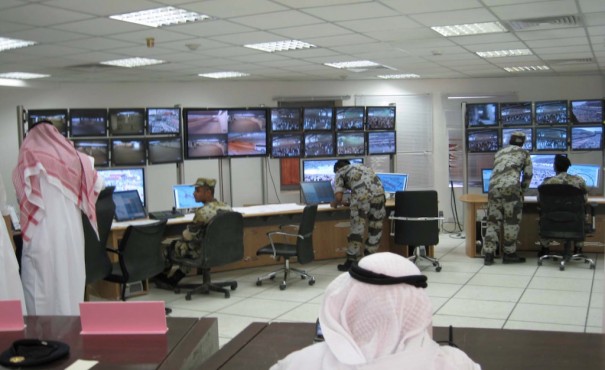The pilgrimage to Mecca will this year feature a thousand new cameras and electronic identification bracelets
As one of the five pillars of Islam, the pilgrimage (Hajj) to the cities of Mecca and Medina gathers more than two million people in very specific places, where security measures are critical to prevent tragedies such as 2015, and that this year they have increased with a thousand new cameras and bracelets of electronic identification.
The pilgrimage to the Kaaba, the first holy place of Islam, in Mecca will start in a few months for millions of believers around the world, they concentrate for a few days, at the same time and in very specific spaces to fulfill the rituals, which are added during the rest of the year to those of the profession of faith or shahada, almsgiving, prayer and fasting in the month of Ramadan that has just ended.
Safety these days, to prevent a repeat of human avalanches and stampedes, like last year's, with dozens of dead according to official figures, has been the reason for the Saudi authorities to reinforce at present the video surveillance system installed, with the deployment of a thousand new cameras in Mecca, Medina and in the vicinity of the Great Mosque, as well as at jamarat bridge, where the ritual of stoning is performed, and the Mine Valley.
 Another security measure this year is that the government is handing out electronic identification bracelets or bracelets to pilgrims., equipped with GPS and personal medical information of each person, as well as prayer schedules in the hajj ritual and assistance services in several languages, according to information provided to reuters agency.
Another security measure this year is that the government is handing out electronic identification bracelets or bracelets to pilgrims., equipped with GPS and personal medical information of each person, as well as prayer schedules in the hajj ritual and assistance services in several languages, according to information provided to reuters agency.
The new video surveillance cameras are connected to the control and monitoring rooms (some of which are activated only during these dates, as well as special forces) to control in real time all the spaces in which the pilgrims are concentrated.
 The entire security system is based on the project carried out years ago by the multinational Thales, through its Security Solutions division & Services, and that is activated once a year, on every pilgrimage, consisting of providing a digital CCTV of high availability and reliability, with redundant network equipment and servers, connected with a mass monitoring and people counting system, for the management of flows of people and estimation of the number of people.
The entire security system is based on the project carried out years ago by the multinational Thales, through its Security Solutions division & Services, and that is activated once a year, on every pilgrimage, consisting of providing a digital CCTV of high availability and reliability, with redundant network equipment and servers, connected with a mass monitoring and people counting system, for the management of flows of people and estimation of the number of people.
The transmission of images is done to a central control, connected to other control rooms, to analyze information and manage alarms. To this is added a crisis management system to send informative messages to pilgrims through the large format screens located in the streets, and in communication with emergency forces deployed in the area.
 Centralized and comprehensive configuration of the video management system facilitates the reconstruction of sequences for post-event analysis, as well as the anticipation and reaction on potentially dangerous situations for pilgrims to perform their hajj more safely.
Centralized and comprehensive configuration of the video management system facilitates the reconstruction of sequences for post-event analysis, as well as the anticipation and reaction on potentially dangerous situations for pilgrims to perform their hajj more safely.
This system consists of 469 video surveillance cameras and mass management; 330 dome devices and 55 fixed cameras; 24 network video recorders, With 192 TB of storage capacity; 142 LCD display monitors; 16 workstations with CCTV controls and redundant and network central servers, as well as 84 mass management sensors.
You liked this article?
Subscribe to our RSS feed And you won't miss anything.
• Section: Deep down, Case studies, Access control, Systems control, MAIN HIGHLIGHT, Events, Urban security, Services, Video surveillance



